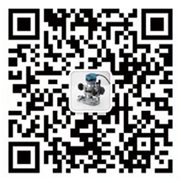Precautions for using sanding machine
As a commonly used mechanical equipment, sanding machines are widely used for surface treatment of various materials. To ensure the safety of operators and the normal operation of equipment, the following precautions should be taken when using a sanding machine:
Safety equipment and protective measures
Warning signs: Clear safety warning signs should be set up in the operating area of the sanding machine, including no entry, safety precautions, and other signs.
Personal protective equipment: Operators must wear appropriate personal protective equipment such as goggles, dust masks, earplugs, and non slip shoes.
Ventilation and dust prevention: Ensure good ventilation in the operating area, prevent dust accumulation, and equip effective dust removal equipment.
Equipment inspection and maintenance
Power and transmission device inspection: Before operation, check whether the power lines, switches, and transmission devices of the equipment are intact to ensure the safety and reliability of the equipment.
Sand belt and grinding wheel inspection: Check the cleanliness and sharpness of the sand belt, whether the installation direction is correct, whether the sand belt specifications are applicable, and whether the tightness is appropriate. Confirm that the working direction of the grinding wheel is correct and lock the grinding wheel to prevent it from flying out.
Regular maintenance: Regularly maintain the sanding machine, replace abrasives and sandpaper in a timely manner, and check whether each component is normal.
Operating procedures and precautions
Clothing and long hair management: Operators must not wear clothes that are easily caught up by the machine (such as ties, necklaces, loose clothing, etc.), and those with long hair must roll up their hair or wear a headband.
Safety device and tool management: Do not dismantle the safety devices on the machine at will, and do not place any non working objects on the workbench.
Precautions during operation: During normal operation, pay attention to the electrical load of the ammeter to prevent overload from causing machine trip or sand belt breakage. When lifting the board, it is necessary to cooperate well with each other to prevent finger pressure injuries. The adjustment of the tabletop must not exceed the range of the controller, and the speed of the conveyor belt should be adjusted slowly and gradually during machine operation.
Exception handling: When encountering sand belt deviation or sanding phenomenon during work, do not touch it with your hands. Correct or replace it after the sand belt stops running. When the machine runs abnormally, it should be stopped immediately and handed over to professional personnel for maintenance. During maintenance, ensure that the power is disconnected.
Processing after homework completion
Cleaning and maintenance: Turn off the power of the sanding machine, tidy up the power cord, and clean the debris and workbench around the machine. Perform regular maintenance and upkeep on the machine, and check if all components are functioning properly.
Record and report: Keep good usage records, timely record the operation and troubleshooting of the machine, and facilitate subsequent maintenance and management.
In summary, when using the Hanye sanding machine, it is necessary to strictly follow the above safety equipment and protective measures, equipment inspection and maintenance, operating procedures and precautions, as well as the handling requirements after the operation is completed. These precautions aim to ensure the safety of operators and the normal operation of equipment, reducing the occurrence of accidents.












